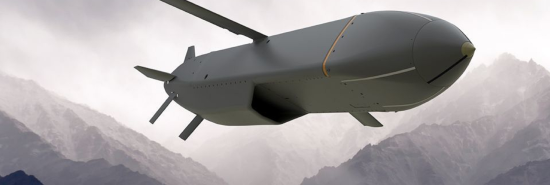
Three benefits the UK’s Storm Shadow missiles bring to Ukraine
Tom Rogan
The United Kingdom has announced it will provide Storm Shadow air-launched cruise missiles to Ukraine.
With a range of up to 150 miles, the missile is designed to destroy command and control centers, bunkers, and other hardened ground targets. The advantages the missile offers to Ukraine are threefold.
SENATE LEADERS PLAY DEBT CEILING GAME AS AIDES NEGOTIATE BEHIND THE SCENES
First, Storm Shadow will enable Ukrainian forces to conduct strikes deeper inside Russian-controlled territory.
While the U.K. appears to have insisted the missile only be used to strike Russian targets inside Ukraine rather than also inside Russian territory (likely under pressure from Washington), its range extends by three times the strike range of Ukraine’s United States-provided HIMARS missile artillery system.
As Ukraine commences its much-anticipated counter-offensive, the Storm Shadow will allow Ukraine to strike Russian command targets across the entirety of Ukrainian territory. This will exert significant pressure on Russian commanders, their forward headquarters, and their associated organization of defensive efforts. It will also pressure Russian forces to take additional steps to mitigate the detection of their command centers, thus degrading Russia’s effective battlefield management.
Storm Shadow’s second benefit for Ukraine is that it can be employed at a relatively low risk to Ukrainian pilots.
Britain’s Royal Air Force places a premium on training for low-altitude ground attack operations. This is one of the benefits, for example, that U.S. Air Force F-15 aircrews based in the U.K. accrue in training alongside the RAF (one example, here). But for Ukraine, which has only older non-stealth jets, RAF training will offer significant benefits for both the evasion of Russian air defenses and the effective employment of these weapons. Put simply, Storm Shadow will enable the Ukrainian air force to do more damage at lower risk.
Finally, Storm Shadow serves as an escalation warning to Moscow.
The only thing stopping Ukraine from using this weapon against Russian territory is the U.K.’s caveat that it not do so. But if Russia sustains its attacks on civilian targets inside Ukraine, Moscow knows London may remove the targeting caveat. Indeed, from territory already under its control, Ukraine could launch Storm Shadow against the headquarters of the Russian southern military district in Rostov-on-Don, or against Russian logistics nodes near cities such as Bryansk, Kursk, and Voronezh.
The U.K.’s risk tolerance should not be underestimated. British support for Ukraine carries an emotive impetus, driven by enduring anger on the part of the security establishment over Russian attacks on U.K. soil, such as the 2018 Skripal incident.
While the U.K. is more cautious than the U.S. would like when it comes to China policy, London has embraced an aggressive posture towards supporting Ukraine since the war began. As the Washington Examiner was first to report, U.K. special forces activity in Ukraine has been instrumental to Ukrainian action behind the Russian front lines.
U.K. defense secretary Ben Wallace, who also held his office under the previous two prime ministers, has pushed for greater support for Ukraine under Prime Minister Rishi Sunak. Now that Sunak has authorized this delivery, it is likely that further U.K. provisions of new capabilities will follow.
The top line: this announcement is good news for Ukraine and bad news for the Russian military. Especially so for Russian command and control.
